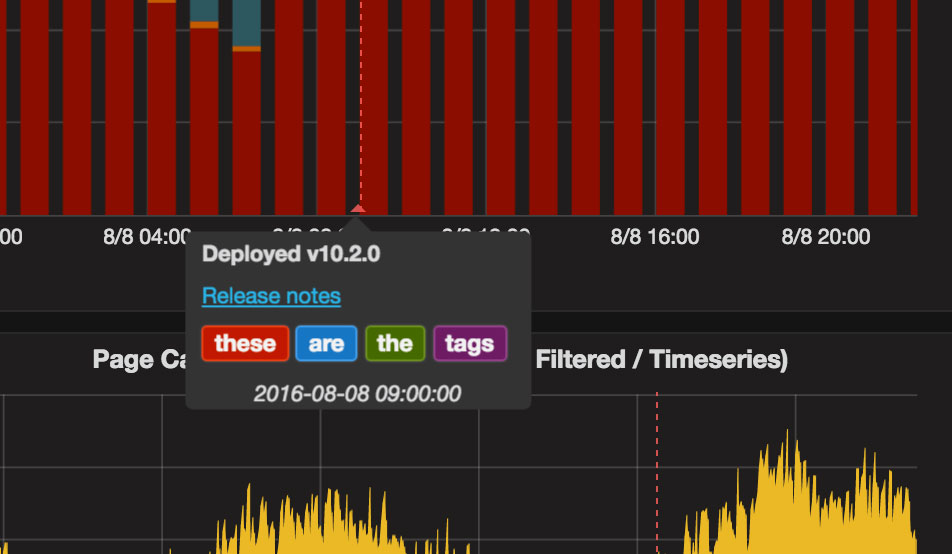

- #Grafana annotations influxdb how to#
- #Grafana annotations influxdb install#
- #Grafana annotations influxdb series#
Grafana includes three special data sources: In the meantime, check out our blog!įor general information about querying in Grafana, and common options and user interface elements across all query editors, refer to Query and transform data. If it’s the latter, we’d expect they’ll be back up and running soon. Either we entered the id wrong (oops!), or Vimeo is down. There’s supposed to be a video here, but for some reason there isn’t.

You use a data source’s query editor when you create queries in dashboard panels or Explore.īecause of the differences between query languages, each data source query editor looks and functions differently.ĭepending on your data source, the query editor might provide auto-completion features, metric names, variable suggestions, or a visual query-building interface.įor example, this video demonstrates the visual Prometheus query builder: Use query editors The InfluxDB query editorĮach data source’s query editor provides a customized user interface that helps you write queries that take advantage of its unique capabilities.
#Grafana annotations influxdb how to#
To access data source management tools in Grafana as an administrator, navigate to Configuration > Data Sources in the Grafana sidebar.įor details on data source management, including instructions on how to add data sources and configure user permissions for queries, refer to the administration documentation. Only users with the organization administrator role can add or remove data sources. To develop a custom plugin, refer to Build a plugin. This documentation describes how to manage data sources in general,Īnd how to configure or query the built-in data sources.įor other data sources, refer to the list of datasource plugins. Which formulates custom queries according to the source’s structure.Īfter you add and configure a data source, you can use it as an input for many operations, including: If the plugin you need doesn’t exist, you can develop a custom plugin.Įach data source comes with a query editor,
#Grafana annotations influxdb install#
If you need other data sources, you can also install one of the many data source plugins. Grafana comes with built-in support for many data sources. If you have alternative scalable approach please share it.Grafana Cloud Enterprise Open source Data sources It will be very easy to retrieve all the annotation on a specific machine with anomaly. In addition, this feature links very well to the other feature that lets user query based on annotation that are represented in a template variable ( ). At the moment the only possible approach is that the annotator copy by hand the name identifier of the objects involved, that will require a lot more of (tedious) work that can be avoided by adding this simple feature. In the use case I am working, we want to put in place a pipeline for annotating anomalies on hypervisors/servers, and this feature will help in making the annotation feature really usable and scalable in this scenarios.

This is a very crucial task in all the major industrial setting in which data are collected through sensor on many machine ( monitoring of health of train track, power plant, servers).
#Grafana annotations influxdb series#
Why is this needed: it is useful because it can help in the very general task of annotating a time series dataset for the application of machine learning algorithms. Later I want to query all the anomalies on the specific object and see them in another dashboard.I want to be automatically add in the annotation's tags the identifier names of the objects.This annotation is representing an anomaly, it is an interval anomaly. I select only one (or a subset) of those objects, because I want to add an annotation for them only.I have a template variable to select (with checkbox) which object (via a name identifier) that I want to visualise. This panel has multiple time series of different objects (ca 80 - 200), all of the same type, a sort of swarm. Select a specific panel in my dashboard.What would you like to be added: These are the steps that I want to be able to do:


 0 kommentar(er)
0 kommentar(er)
